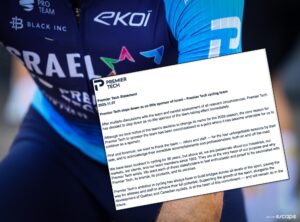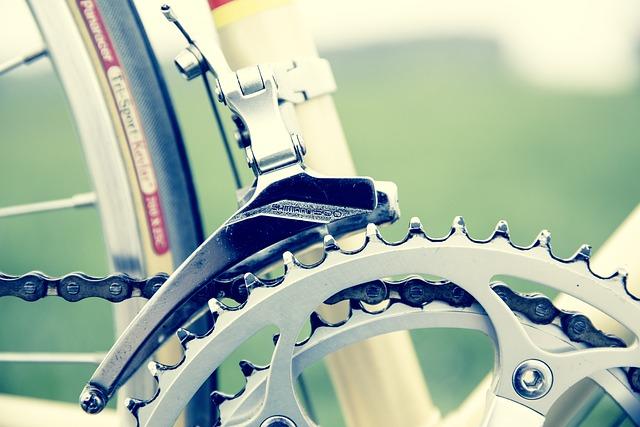The New Scott Fastlane: A Standard Road Bike… Or Is It?
In a world where cycling technology is evolving at breakneck speed, the release of the new Scott Fastlane has sent ripples through the cycling community. Marketed as a standard road bike, it raises intriguing questions about its true identity and capabilities. With its sleek design and a range of innovative features, the Fastlane appears poised to redefine the boundaries of road cycling performance. However, industry experts and cycling enthusiasts alike are questioning whether this bike truly adheres to the traditional norms of road racing or blurs the lines into a hybrid category. As we delve into the specifications, design philosophy, and riding experience of the Fastlane, we aim to uncover whether Scott’s latest offering is just another road bike or a game-changing contender in the market.
Exploring the Versatility of the New Scott Fastlane as a Road Bike
The new Scott Fastlane challenges conventional notions of what a road bike can be. Designed with multiple riding styles in mind, this model transcends the typical road-focused limitations. Its lightweight frame coupled with aero tubing creates a bike that is not only fast but also agile, tackling city streets, gravel paths, and even the occasional trail with ease. Riders will appreciate how its geometry accommodates a more aggressive riding posture, while the inclusion of wider tires adds a level of versatility that opens up previously off-limits terrains.
Additionally, the engineering brilliance of the Fastlane is showcased through its innovative features that enhance both performance and comfort. The bike’s advanced suspension system mitigates vibrations, ensuring smooth rides on both paved roads and rough trails. A quick glance at the specifications reveals how the integration of disc brakes adds stopping power irrespective of weather conditions, making it a reliable choice for the adventurous cyclist. Below is a brief comparison of key features that solidify the Fastlane’s standout status:
| Feature | Traditional Road Bike | Scott Fastlane |
|---|---|---|
| Weight | Lightweight | Ultra-light frame |
| Versatility | Primarily road | Road, gravel, light trails |
| Tire Clearance | Limited | Wider tires allowed |
| Brake System | Rim brakes | Hydraulic disc brakes |
Key Features that Challenge the Standard Bicycle Norm
The Scott Fastlane breaks conventional barriers with features that redefine the concept of a standard road bike. First and foremost, it introduces an aerodynamic frame design that minimizes drag without sacrificing comfort. The bike’s geometry is not just tailored for speed, but also enhances stability during high-intensity rides. This means that cyclists can maintain control even when pushing their limits. Additionally, the incorporation of multi-surface tires allows riders to transition seamlessly from pavement to gravel, reinforcing the idea that versatility can coexist with performance.
Another significant standout is its integrated technology. The Fastlane comes equipped with a built-in power meter that provides real-time performance data directly to the rider’s handlebars. This feature potentially changes the training game, allowing cyclists to monitor metrics like cadence and wattage without needing additional equipment. Furthermore, the bike’s customizable component system empowers riders to tailor their setup according to their unique preferences, moving beyond the one-size-fits-all approach that often characterizes standard models. Each of these elements contributes to a radical rethinking of what a road bike can offer today.
Expert Recommendations for Choosing the Right Model for Your Riding Style
When selecting the right model for your riding style, it’s essential to consider your specific needs and preferences. The Scott Fastlane stands out with its blend of performance and comfort, making it suitable for a range of cyclists. Here are some key factors to evaluate:
- Intended Use: Determine whether you’ll be using the bike for commuting, recreational riding, or competitive purposes. The Fastlane can adapt well but assess your primary needs.
- Fit and Comfort: A proper fit is crucial. Test ride different sizes to find the most comfortable position, which can drastically enhance your riding experience.
- Terrain Compatibility: Consider the usual surfaces you will ride on. The Fastlane performs well on both smooth pavements and moderate gravel.
Additionally, comparing specifications can guide you in making an informed choice. Below is a simplified overview of considerations to keep in mind:
| Specification | Scott Fastlane | Other Models |
|---|---|---|
| Frame Material | Lightweight Aluminum | Carbon Fiber & Steel Options |
| Gearing System | 11-Speed | Varies by Model |
| Weight | Approx. 10 kg | Variable |
By reflecting on these aspects, you’ll be better positioned to decide if the Scott Fastlane aligns with your riding style, ensuring a bike that not only performs but also enhances your cycling adventures.
Closing Remarks
In conclusion, the new Scott Fastlane straddles a fine line between tradition and innovation in the road bike category. While it embodies the characteristics of a standard road bike with its lightweight frame and aerodynamic design, its cutting-edge features and adaptability challenge the very definition of what a road bike can be. As industry experts and cyclists alike weigh in on its performance and versatility, the Fastlane prompts a broader discussion about the future of cycling in an era where boundaries are increasingly blurred. Whether it ultimately proves to be a standard that redefines road biking or simply an exceptional entry in a crowded market remains to be seen. For now, one thing is clear: the Fastlane is more than just a bike; it’s a statement of intent in the rapidly evolving landscape of cycling technology. As riders take to the road, only time will tell if the Fastlane truly carves out its own lane in the ever-competitive cycling world.











